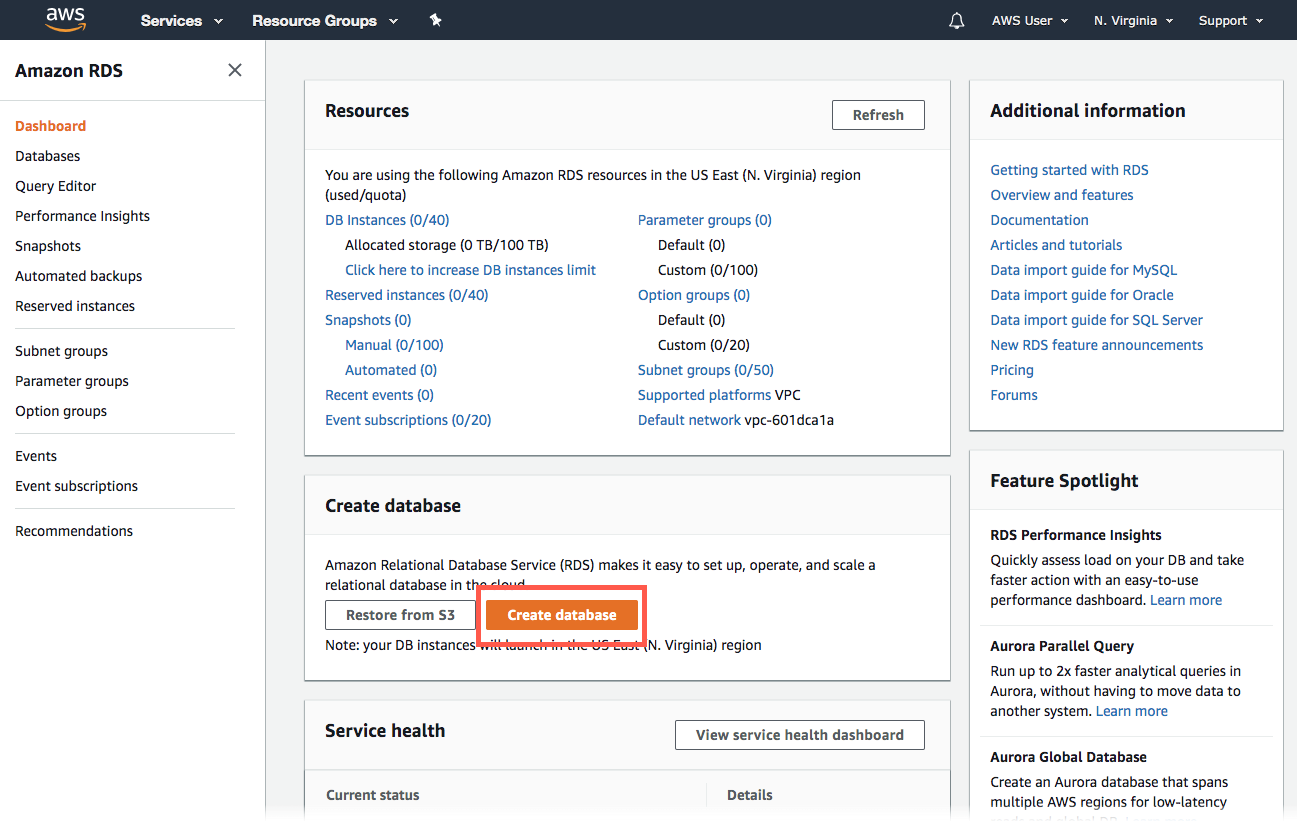
Select the KMS master key (dbms) for both the source and target databases (see Figure 11). In Advanced settings, extra connection attributes available for MySQL Database and PostgreSQL database may be specified, but none are required for this tutorial. Specify the PostgreSQL Database name (postgresdb), also as configured when creating the RDS DB instance.įigure 10: Specifying SSL mode, Username, Password, and SID or Database name
#Aws postgresql tutorial password#
Specify the Username and Password as configured when creating the RDS DB instances. Select SSL mode as none for both the source and target databases. Scroll down for more endpoint configuration settings, as shown in Figure 10.

Specify the port separately for the source and target databases: 3306 for MySQL database and 5432 for Postgres.įigure 9: Specifying Servername and Port for Source and Target Databases For a PostgreSQL database on RDS, the Endpoint is .:5432 therefore, specify the Servername as. Therefore, specify the Servername as ., as shown in Figure 9. For a MySQL database, the RDS Endpoint is .:3306. In Servername, specify the Endpoint for the RDS DB instance for the database by removing the :port suffix. Select Target engine as “postgres,” as shown in Figure 8. Select the Source engine as “mysql,” as shown in Figure 7. The migration endpoints may be added while the replication instance is being created. The replication instance could take a few minutes to get created. Next, the source and target database connections need to be configured, which we shall accomplish in the next sub-section.įigure 6: Replication Instance begins to get created Creating Migration Task Endpoints The replication instance begins to get created, as shown by the message in Figure 6. Select the KMS master key (dbms) created earlier in the Setting the Environment section.įigure 4: Configuring Advanced Settings for Replication Instance In Advanced, keep the default settings for Allocated storage (50 GB), Replication Subnet Group, Availability zone (No preference), and VPC Security Group (Use default), as shown in Figure 4. Select a VPC and select the option to configure high availability with Mult-Az the default setting is set to “No.” Select the option Publicly accessible.įigure 3: Configuring a Replication Instance Specify a replication instance Name and Description, and select an Instance class (the default is dms.t2.medium), as shown in Figure 3.

Next, configure a replication instance, which establishes the connection between the source and target databases, transfers the data, and caches data changes that occur during the initial data load. Click Next, as shown in Figure 2.įigure 2: DMS Wizard Creating a Replication Instance Navigate to the DMS dashboard and click Create migration, as shown in Figure 1. We shall discuss creating each of these in sub-sections, but first you need to create a DMS migration. A DMS migration consists of the following components: In this section, we shall create a Database Migration Service (DMS) to migrate the MySQL Database to PostgreSQL database. This tutorial has the following sections: In this continuation tutorial, we shall create a DMS migration to perform the migration. In the second tutorial, Migrating MySQL to PostgreSQL on AWS RDS, Part 2,” we created instances of the MySQL and PostgreSQL on RDS and connected to the two instances.

In the first tutorial, “ Migrating MySQL to PostgreSQL on AWS RDS, Part 1,” we introduced DMS and created an IAM user for the DMS. In a set of four tutorials, we are exploring migrating a MySQL database instance to a PostgreSQL database by using AWS Database Migration Service (DMS).


 0 kommentar(er)
0 kommentar(er)
